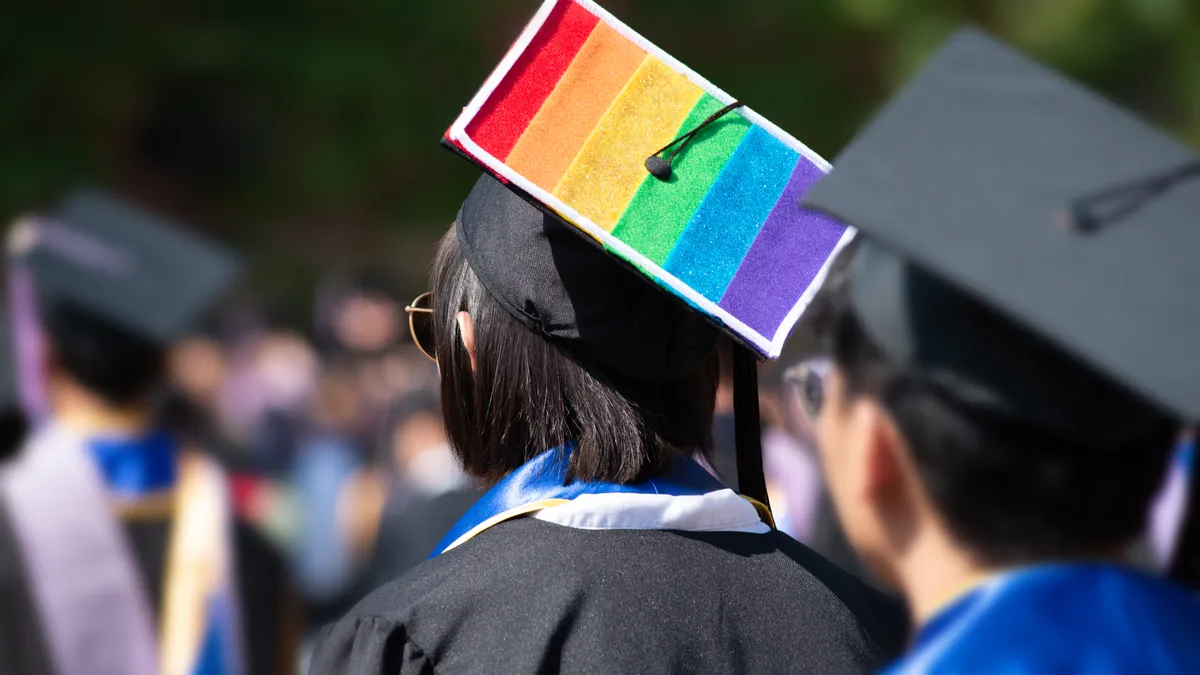Dive Brief:
-
Barriers to mental health and community support exist across all states for LGBTQ students, according to a first-ever state breakdown of LGBTQ youth mental health released last week by the Trevor Project.
-
LGBTQ students also show high levels of mental health challenges, such as suicide risk, anxiety and depression, regardless of states' political leanings, the report found. For example, 44% and 41% of LGBTQ students in California and New York — blue states traditionally seen as more accepting of LGBTQ culture — seriously considered suicide in the past year. In Texas and Florida, red states that have passed anti-LGBTQ legislation in the past year, the rates are 47% and 45%, respectively.
-
A majority of LGBTQ students in every state except two said they sought mental healthcare but were unable to access it. The state showing the highest percentage of such students was Mississippi, at 71%, and the state with the lowest was Vermont, at 45%.
Dive Insight:
The Trevor Project's report, based on a 2022 survey of 34,000 LGBTQ young people ages 13-24, mirrors national trends showing an increasing percentage of LGBTQ students having a hard time accessing mental health support.
In May, The Trevor Project reported an increase in students saying they could not get the mental health counseling they sought in the prior year, from 48% of LGBTQ students in 2021 to 60% in 2022.
The new report shows large variations in the percentage of students reporting whether their schools were safe spaces. In Mississippi, for example, less than 1 in 4 LGBTQ youth (23%) identified their schools as LGBTQ-affirming spaces, compared to 53% of LGBTQ students in Delaware.
"LGBTQ students spend a significant amount of their time at school, making it imperative that educators, administrators, and school leaders consider the unique challenges that this group of students face," said Keygan Miller, public training manager at The Trevor Project, in an email. "It should be noted that even in more affirming or liberal states, LGBTQ students can still face many of these challenges if they find themselves in an unaffirming or unaccepting school environment."
Affirming school environments are often linked to better outcomes for LGBTQ students, such as improved attendance and increased likelihood of planning to pursue postsecondary education. LGBTQ students who experience higher rates of victimization, meanwhile, are more likely to miss school and be disciplined.
Miller said The Trevor Project has consistently found that LGBTQ students who have access to LGBTQ-affirming schools — and transgender and nonbinary students who have support from their teachers and peers — report better mental health outcomes and lower rates of attempting suicide.
Although students in all states, regardless of political leaning, consistently report barriers to accessing mental healthcare, Miller said the current data should still be put into context with spreading anti-LGBTQ laws.
"We’ve been hearing from educators who want to be supportive of their LGBTQ students but feel that they cannot express this support visibly out of fear of repercussions from these laws," Miller said. "LGBTQ youth are listening and internalizing the negative messages they are seeing as a result of these types of legislation and we know that it’s harmful to their mental health."












